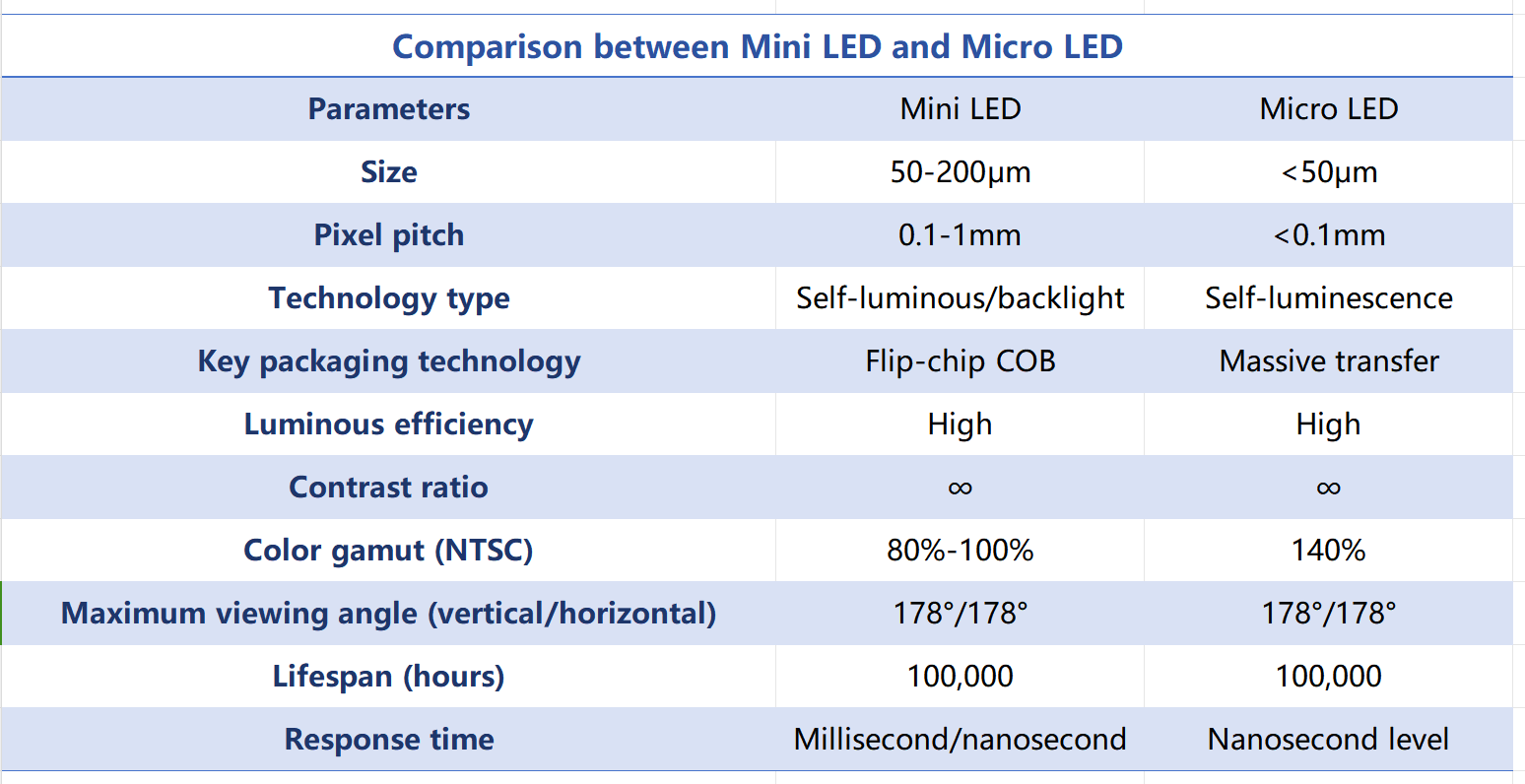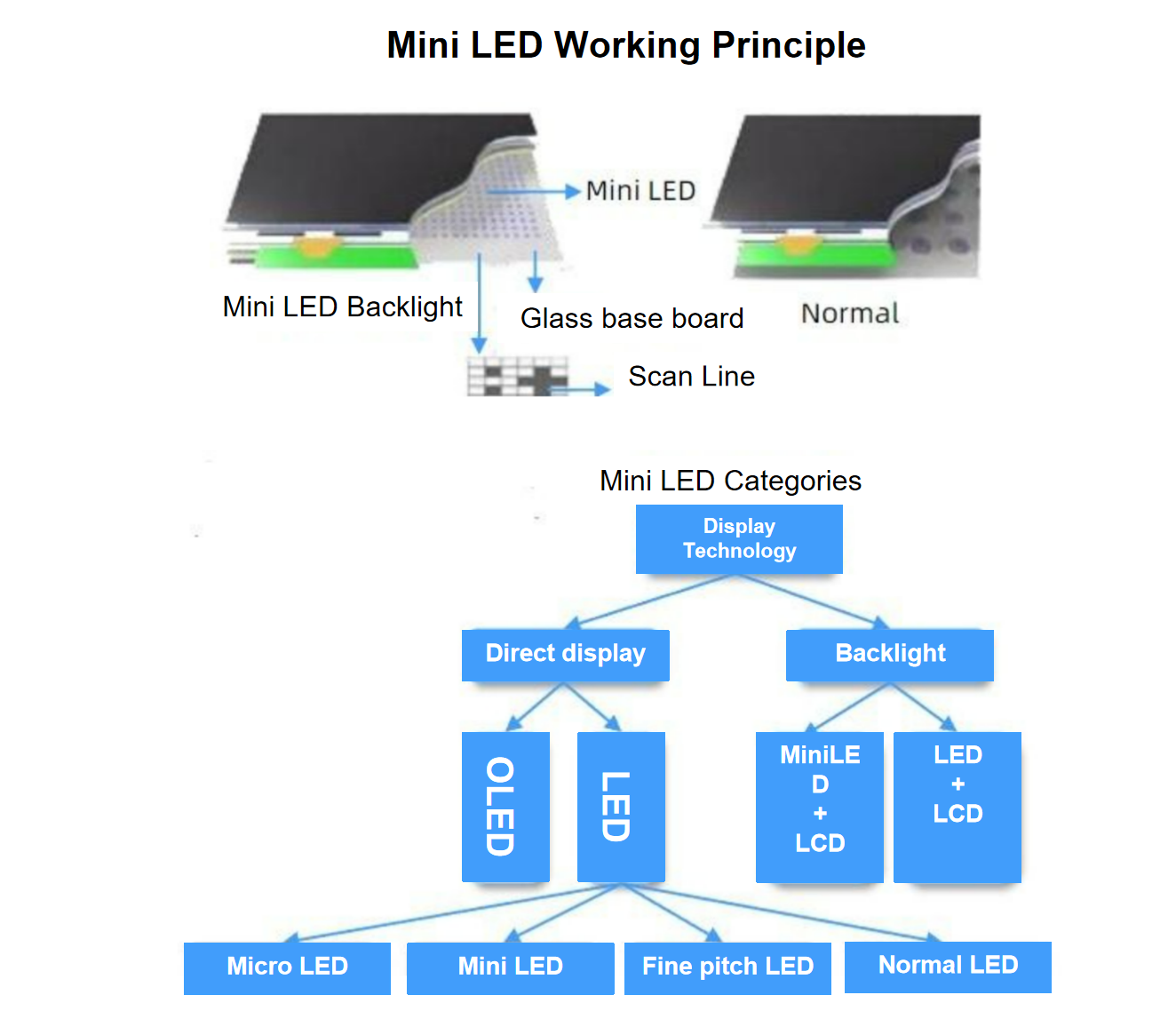For your convenience, here are some data from authoritative industry research databases for reference:
Mini/MicroLED has attracted much attention due to its many significant advantages, such as ultra-low power consumption, possibility of personalized customization, ultra-high brightness and resolution, excellent color saturation, extremely fast response speed, energy-saving and high efficiency, and long service life. These characteristics enable Mini/MicroLED to present a clearer and more delicate picture effect.
 Mini LED, or sub-millimeter light-emitting diode, is mainly divided into two application forms: direct display and backlight. It is similar to Micro LED, both of which are display technologies based on tiny LED crystal particles as pixel light-emitting points. According to industry standards, Mini LED refers to LED devices with chip sizes between 50 and 200 μm, consisting of a pixel array and a driving circuit, with a pixel center spacing between 0.3 and 1.5 mm.
Mini LED, or sub-millimeter light-emitting diode, is mainly divided into two application forms: direct display and backlight. It is similar to Micro LED, both of which are display technologies based on tiny LED crystal particles as pixel light-emitting points. According to industry standards, Mini LED refers to LED devices with chip sizes between 50 and 200 μm, consisting of a pixel array and a driving circuit, with a pixel center spacing between 0.3 and 1.5 mm.
With the significant reduction in the size of individual LED lamp beads and driver chips, the idea of realizing more dynamic partitions has become possible. Each scanning partition requires at least three chips to control, because the LED control chip needs to control the three single colors of red, green and blue respectively, that is, a pixel that displays white requires three control chips. Therefore, as the number of backlight partitions increases, the demand for Mini LED driver chips will also increase significantly, and displays with higher color contrast requirements will require a large number of driver chip support.
Compared with another display technology, OLED, Mini LED backlight TV panels are similar in thickness to OLED TV panels, and both have the advantages of wide color gamut. However, Mini LED’s regional adjustment technology brings higher contrast, while also performing well in response time and energy saving.
MicroLED display technology uses self-luminous micron-scale LEDs as light-emitting pixel units, and assembles them on a driving panel to form a high-density LED array to achieve display. Due to its small chip size, high integration, and self-luminous characteristics, MicroLED has significant advantages over LCD and OLED in terms of brightness, resolution, contrast, energy consumption, service life, response speed, and thermal stability.
Post time: May-18-2024






